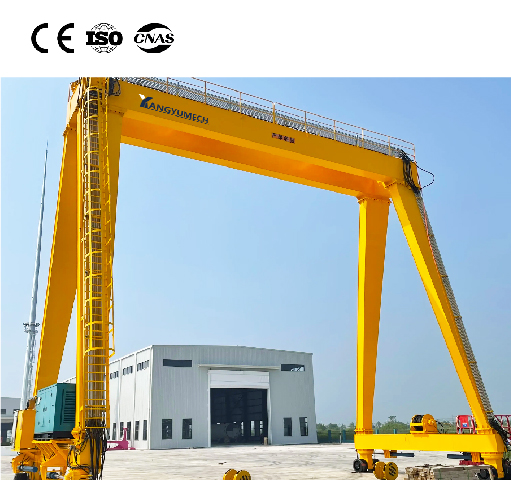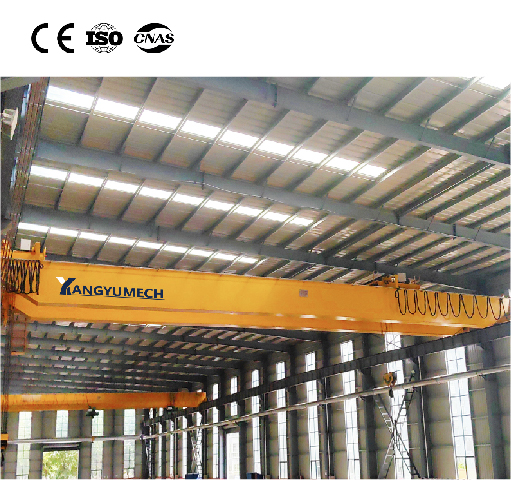Choosing the right lifting equipment is a critical decision that impacts efficiency, safety, and the bottom line in industrial and construction operations. Two of the most common and powerful options available are gantry cranes and overhead cranes (often referred to as bridge cranes). While they might seem similar at first glance, they possess distinct structural designs, advantages, and ideal use cases.

This article breaks down the key advantages of both gantry cranes and overhead cranes to help you determine the best fit for your operational needs.
Before diving into the specific advantages, here’s a quick overview of their fundamental differences.
| Feature | Gantry Crane | Overhead Crane (Bridge Crane) |
|---|---|---|
| Support Structure | Self-supported by leg(s) that run on floor-mounted rails or wheels. | Supported by the building structure itself, running on rails attached to runway beams. |
| Mobility | Highly mobile; can be relocated, including outdoors. | Fixed installation within a building; permanent placement. |
| Typical Use | Ideal for outdoor yards, shipping ports, construction sites, and large, open areas. | Ideal for fixed indoor environments like manufacturing workshops, warehouses, and assembly lines. |
| Installation Cost | Generally higher initial investment due to required groundwork and structure. | Often more economical initially as it utilizes the existing building structure. |
| Floor Space | Requires clear floor space for legs and movement. | Maximizes floor space as no leg supports are needed on the ground. |

Gantry cranes are characterized by their freestanding structure, with one or two robust legs supporting a bridge that carries a lifting trolley and hoist.
One of the greatest strengths of a gantry crane is its mobility. Many models, particularly single-leg or smaller systems, can be equipped with wheels (often flanged for rails or rubber-tired for flat surfaces) and can be easily relocated around a workshop, yard, or site. This allows for lifting operations to be performed exactly where they are needed without the constraint of a fixed runway system.
Gantry cranes are the go-to solution for outdoor applications. Since they are self-supporting and do not rely on a building’s framework, they excel in environments like shipyards, ports for container handling, lumber yards, steel storage yards, and large-scale construction projects. Their design is built to withstand outdoor elements.
This is a significant advantage, especially for facilities with weak or unsuitable roof structures. Installing a gantry crane does not place any stress on the building’s columns or roof, eliminating the need for costly and complex reinforcement of the existing structure. This makes them a viable option in older buildings or in spaces like large open-air storage areas where there is no roof at all.
Gantry cranes, especially double-girder designs, are known for their impressive lifting capacities, often handling loads from 5 tons up to 150 tons or even more for specialized applications.5 They can be customized with various attachments like magnets, grabs, and hooks, making them versatile for handling diverse materials such as shipping containers, heavy machinery, concrete pipes, and steel coils.
The open-legged design of a gantry crane provides excellent access from all sides of the load. This can simplify the process of connecting slings and rigging and allows for easier positioning of loads, which is particularly beneficial for awkwardly shaped items.

Overhead cranes consist of a bridge that moves along elevated runway rails fixed to a building’s support structure. A hoist and trolley move back and forth across this bridge.
This is arguably the biggest advantage of an overhead crane system. Because the entire crane operates overhead, it frees up 100% of the floor space beneath it. There are no supporting legs or columns to navigate around with forklifts or other equipment. This leads to a safer, more organized, and highly efficient workspace, allowing for unhindered movement of material and personnel below.
Overhead cranes are ideal for repetitive lifting tasks within a fixed area, such as moving materials along a production line, loading/unloading machines in a workshop, or transporting items within a warehouse bay. They offer smooth and precise load control, allowing operators to place heavy loads with accuracy, which is crucial in manufacturing and assembly operations.
Designed for optimized workflow in a controlled path, overhead cranes often feature higher horizontal (bridge and trolley) travel speeds compared to gantry cranes. This can lead to increased efficiency and faster cycle times in environments where materials need to be moved quickly and frequently over a specific, confined area.
By moving lifting operations overhead, the risk of collisions with floor-based equipment is reduced. Furthermore, they can significantly improve ergonomics by eliminating the need for heavy and dangerous manual lifting by workers, reducing physical strain and the potential for workplace injuries.
Overhead cranes are the standard choice for indoor industrial facilities. They are commonly found in factories, machine shops, steel service centers, power plants, warehouses, and automotive assembly plants. Their compact design and ability to operate in buildings with relatively low clearances (especially single-girder designs) make them incredibly versatile for enclosed spaces.
The decision between these two powerful types of equipment ultimately boils down to your specific application and operational environment. Consider the following factors:
Location: Is the primary use indoors or outdoors?
Indoors with a strong structure: Lean towards an Overhead Crane.
Outdoors or indoors with a weak structure: Lean towards a Gantry Crane.
Mobility: Do you need to move the crane to different locations?
Yes, mobility is required: A Gantry Crane is necessary.
No, the task is always in one fixed area: An Overhead Crane is suitable.
Floor Space: Is maximizing clear floor space a top priority?
Yes, every square foot counts: An Overhead Crane is superior.
No, there is ample space: A Gantry Crane is an option.
Budget: Consider both initial investment and long-term value. While gantry cranes can have a higher initial cost due to their supporting structure, overhead cranes require a robust building infrastructure, which might need reinforcement.
There is no single “best” crane—only the best crane for your specific job.
Gantry Cranes shine with their mobility and independence, making them the champions of outdoor yards, shipping terminals, and large, open spaces where flexibility is key.
Overhead Cranes excel in maximizing indoor space and efficiency, providing unparalleled precision and workflow integration for factories, workshops, and warehouses.
By carefully evaluating your operational needs against the distinct advantages of each crane type, you can make an informed investment that enhances safety, boosts productivity, and drives your business forward for years to come.